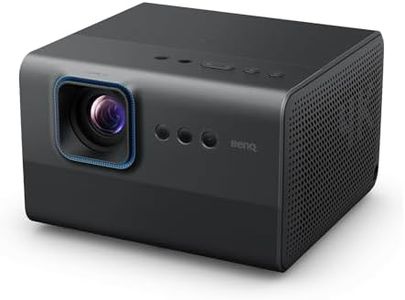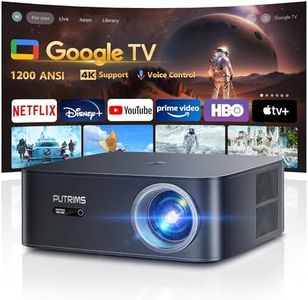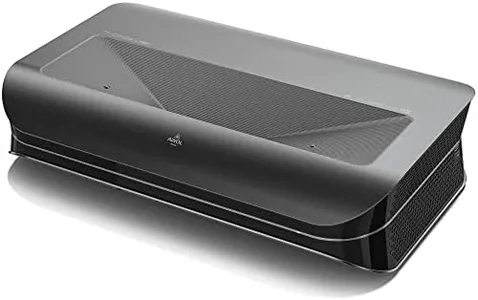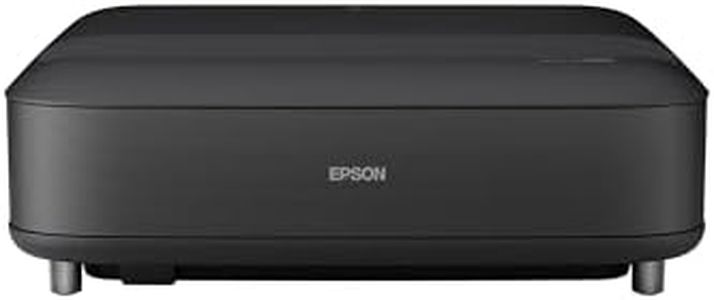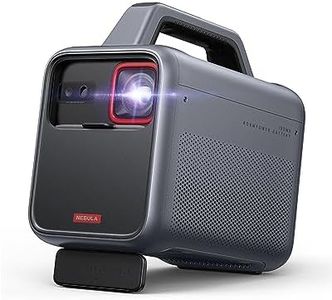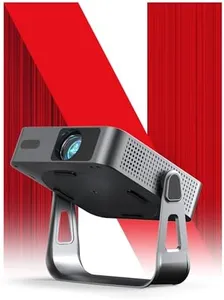We Use CookiesWe use cookies to enhance the security, performance,
functionality and for analytical and promotional activities. By continuing to browse this site you
are agreeing to our privacy policy
10 Best Quiet Projector
From leading brands and best sellers available on the web.Buying Guide for the Best Quiet Projector
Choosing a quiet projector can make a big difference, especially if you intend to use it in environments where noise levels matter, like home theaters, classrooms, or meeting rooms. The goal is to find a projector that delivers great visuals without distracting fan noise, ensuring your movie or presentation isn’t interrupted by an annoying hum. Understanding the key factors that contribute to both quiet operation and performance will help you make the best choice for your particular needs.Fan Noise Level (dB)Fan noise level is a measure of how much sound the projector’s cooling fan produces, typically reported in decibels (dB). Lower values mean a quieter projector. This spec is essential because a noisy projector can be disruptive during movies or quiet presentations. Noise levels below 30 dB are considered very quiet, suitable for home theaters or small rooms, while 30–35 dB is moderate and acceptable for most environments where some ambient noise is common. Noise above 35 dB might become noticeable during quieter moments. If you prioritize minimal distraction, look for models advertised as ‘quiet’ and compare the dB rating to your tolerance for background noise.
Brightness (Lumens)Brightness reflects how much light the projector emits, measured in lumens. While higher brightness helps in well-lit rooms, brighter projectors often need more powerful (and noisier) fans for cooling. Projectors with lower brightness, typically 1000–2000 lumens, can be very quiet but must be used in darker rooms. Models in the 2000–3500 lumens range are versatile, balancing brightness and noise for most indoor uses. If you plan to use your projector in a dim home theater, you might prefer lower-lumen, quieter projectors, but if you need flexibility for daytime or larger spaces, pick a moderately bright one, accepting a small increase in noise.
Projection Technology (DLP, LCD, LED, Laser)The way a projector creates an image—DLP, LCD, LED, or laser—can impact its noise level. LED and laser projectors typically produce less heat and require smaller or slower fans, making them quieter overall. Traditional DLP and LCD projectors may run louder if they use stronger lamps that generate more heat. If silence is your top priority and your space allows for it, consider an LED or laser projector, as these are naturally quieter. Assess what type fits your environment and balance your need for silence with your image quality preferences.
Eco Mode or Quiet ModeMany projectors offer settings like ‘Eco Mode’ or ‘Quiet Mode,’ which reduce the lamp or projector power and thus decrease fan noise. When the projector runs in this mode, you often get reduced brightness in exchange for a quieter experience. If your viewing area is dark or you don’t always need full brightness, check if the projector offers such a mode and how much it quiets the operation. Choose a projector whose Eco Mode noise rating and brightness satisfy your needs.
Cooling System DesignThe efficiency and design of a projector’s cooling system play a big role in how much noise it generates. Some newer projectors feature advanced airflow paths, quieter fans, or even passive cooling with minimal fan use. While not always clearly listed in the specs, looking for mentions of enhanced cooling, ‘whisper-quiet’ fans, or low-noise engineering can help. If silence matters to you—perhaps for a bedroom, small office, or meditation space—research projectors known for their quiet cooling systems and read user reviews for real-world impressions.

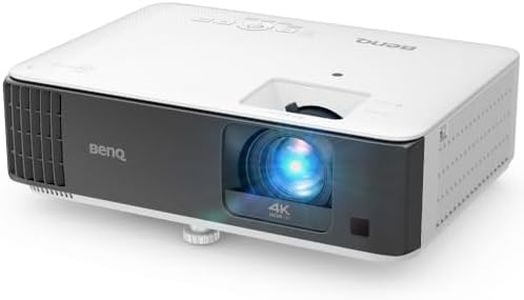
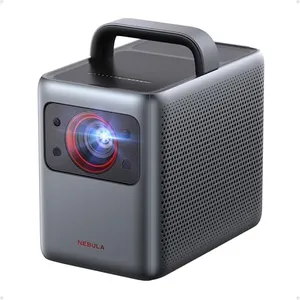
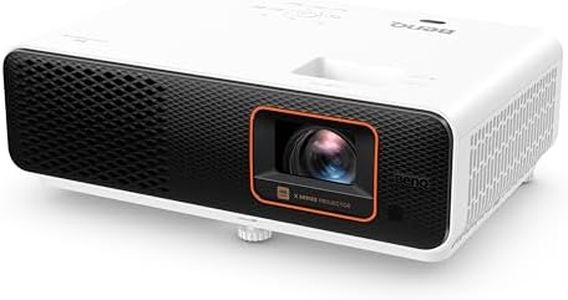
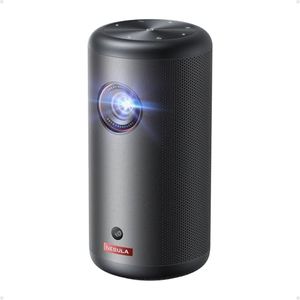
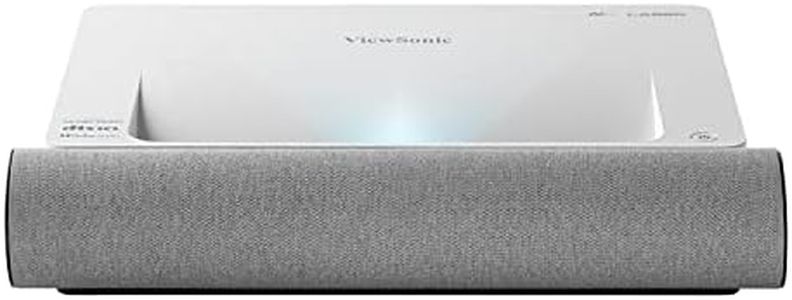
![Projector 4K [Google TV/Dolby Audio] Netflix Disney+ Official,1000 ANSI Auto Focus/Keystone 1080P Portable Projector,Voice Control, WiFi6 Bluetooth HDR10 Smart Movie Home Projector for Bedroom Outdoor](https://images-proxy.bestreviews.guide/CLWRT1xww6yQE3TnOXPYAZe2Be4=/0x300/https://m.media-amazon.com/images/I/51DC3fX1yQL._AC_CX679_.jpg)

